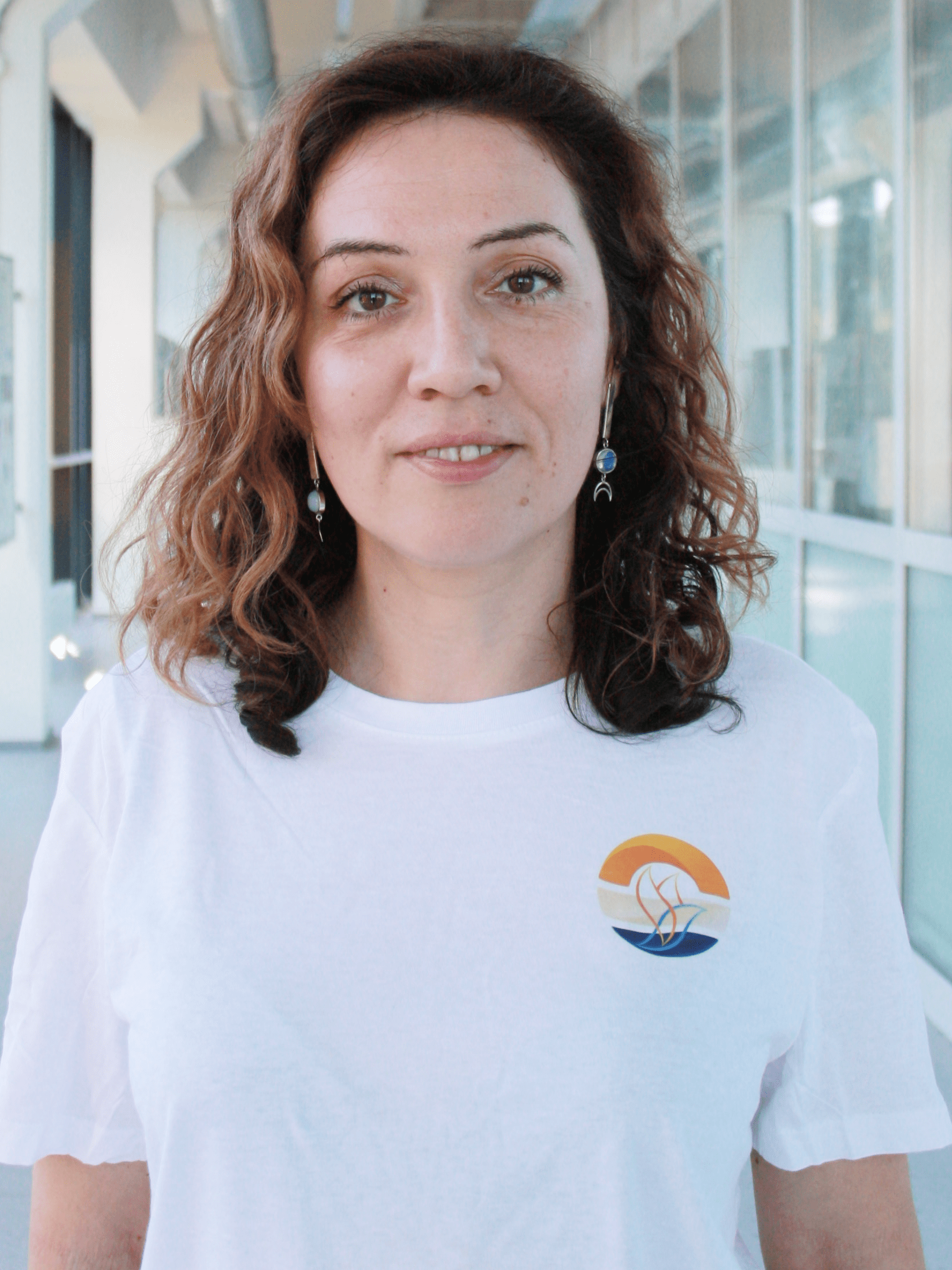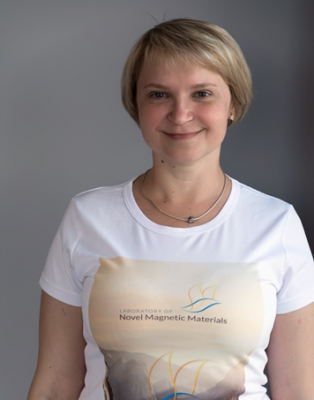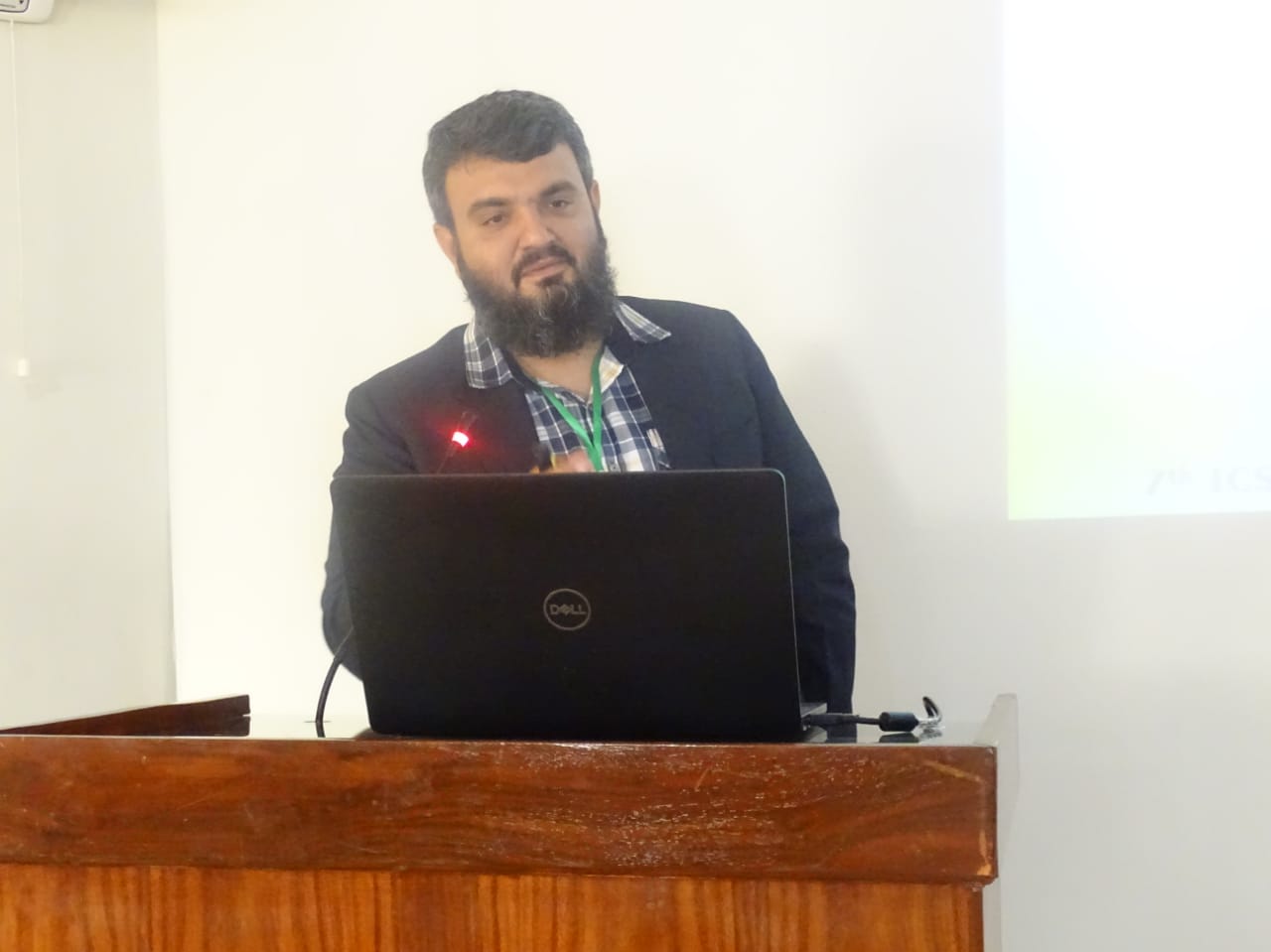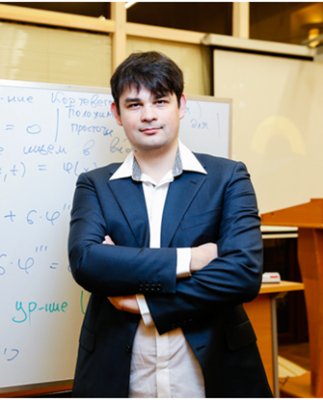Date: 24-18 April, 2017
Dublin, Ierland
Oral talk:
The origin of the magnetization process in Fe-based glass-coated microwires is a fast propagation of head-to-head domain wall along the microwire axis. This high-speed magnetic switching provides a magnetical bistability of glass-coated amorphous microwires and can be widely used for different technical applications – coding, logic, and memory systems (for example, [1-3]); the results of the recent research show also that Fe-based amorphous magnetic glass-coated microwires can be used as temperature sensors for the control of biomechanical processes in the tissue-implant interface [4]. Many factors affect the speed of magnetic switching. The head-to-head domain wall’s velocity and mobility are among them. These parameters of the domain wall propagation depend on microwire composition, i.e. magnetostriction coefficient of metallic nucleus material [5], and internal stresses in the metallic nucleus [6-8]. However, internal mechanical stresses affect the magnetostriction coefficient as well (for example, [9, 10]). The mechanical internal stresses consist of two components: shell-induced stresses, associated with the ratio of diameters (d/D, where d – is the diameter of the metallic nucleus, D – is the total diameter of the microwire with the glass), and internal nucleus stresses (residual, quenching), associated with the diameter of the metallic nucleus [6, 7, 11-13]. That is why we decided to consider the magnetic properties of microwires as a function of two parameters: d and d/D (not as a function of only one – d or d/D as was discussed earlier, for example, in [11-13]). Thus, the topic of our interest is to investigate the influence of mechanical internal stress (with consideration of separate influence of d and d/D) on magnetostatic (i.e. coercivity and switching fields) and magnetostrictive properties of Fe-based magnetically bistable microwires. We studied the magnetic properties on Fe77.5Si7.5B15 microwires with the metallic nucleus diameter of 2.5 to 20 μm and the metallic nucleus diameter/ total microwire diameter ratio, d/D, of 0.1 to 0.8. We studied 19 microwires in total with different transverse sizes. The Lake Shore vibrating sample magnetometer was used for the investigation of magnetostatic properties. Magnetostriction coefficient was measured by small angle magnetization rotation method (for example, [9]). The length of studied samples for the magnetostatic measurements was 1.5 cm, for magnetostriction – 10 cm. Technological features of the manufacture process of glass coated microwires do not allow to produce them with the fixed thickness of the glass coating – changing even one of the production parameters (melt temperature and rate of extraction) always leads to a change in both the diameter of the metallic nucleus and the thickness of glass coating (for example, [14-16]). As a consequence, it is not possible in the experimental study to identify only the influence of stresses associated with the presence of glass coating. It is always a combined influence of shell stresses (the diameters ratio) and stresses of the metallic nucleus, the distribution of which depends on the diameter of the metallic nucleus. That is why in this work we studied the joint influence of shell and core stresses and then separated the effect of each of them by the analysis. To analyse the magnetic properties as a function of two independent variables (d and d/D) we used the Statistica software – solving the task with lack of data. We demonstrated that the contribution of glass shell-induced stresses (associated with the ratio of diameters – d/D) and the stresses originating from quenching (residual, characterized by d) in the metallic nucleus can be separated by the correct simulation-methods analysis of the experimental results [17]. Dependences of the magnetic properties on d and d/D are proved to be non-monotonic and different for various shell-cased and quenching-cased stresses of Fe77.5Si7.5B15 microwires (see figure 1). It was found that for d/D≥0.4 and d≥3.8 μm the dependences of the coercive field on the diameter of the metallic nucleus and diameters ratio are non-monotonic. This behaviour can be explained by the competition between magnetoelastic and magnetostatic energies. Magnetostriction coefficient also depends on the diameters ratio and the diameter of the nucleus. Magnetostriction coefficient is reduced due to the decreasing of the shell-induced stress (increasing of d/D), while increasing of the nucleus diameter (decreasing of d) leads to increasing of magnetostricion coefficient (see figure 2). In the ranges of d, d/D under consideration, the magnetostriction coefficient is more sensitive than magnetostatic properties both to shell-induced, and quenching-induced mechanical stresses in the metallic nucleus of microwires. It can be explained by taking into account the dependence of coercive force on effective anisotropy, which consists of many contributions and particularly magnetoelastic one.
Dependence of magnetostriction coefficient a) on the d for the microwires with similar values of d/D~0.65-0.69; b) on the d/D for microwires with similar values of d~12-13 μm.
The sections of the surface HC(d;d/D) by the planes a) d/D = const and b) d = const.
[1] M. Hayashi, L. Thomas, R. Moriya, C. Rettner, and S. S. P. Parkin, Science 320, (2008), 209-211;
[2] Vazquez M., Handbook of Magnetism and Advanced Magnetic Materials 4: Novel Materials. John Wiley &Sons, Ltd., (2007) 2192-2226;
[3] Zhukov A., Journal of Magnetism and Magnetic Materials 242-245, Part I, (2002), 216-223;
[4] R. Hudak, R. Varga, J. Hudak, D. Praslicka, I. Polacek, P. Klein, R. El Kammouni, M. Vazquez, IEEE Trans Magn 51 (No.1), (2015), 5200104; [5] S. Kaloshkin, A. Talaat, M. Ipatov, V. Zhukova, J. M. Blanco, M. Churyukanova, K. Chichay, and A. Zhukov, Phys. Status Solidi A 211 (No. 5), (2014), 1083–1086;
[6] Zhukov A. Advanced Functional Materials 16 (No.5), (2006), 675-680;
[7] Zhukov A., Zhukova V. NY: Nova Science Publishers, Inc., (2009), 169;
[8]Chen D-X., Pascual L., Castano F., Vazquez M., Hernando A.IEEE Trans. Magn. Part II 37 (No.2), (2001), 994–1002;
[9] K. Chichay, V. Rodionova, V. Zhukova, S. Kaloshkin, M. Churyuknova, and A. Zhukov, Journal of Applied Physics 116, (2014), 173904;
[10] A. Zhukov, M. Churyukanova, S. Kaloshkin, V. Semenkova, S. Gudoshnikov, M. Ipatov, A. Talaat, J.M. Blanco, V. Zhukova, Journal of Alloys and Compounds 651, (2015), 718-723;
[11] M. Vazquez, H. Chiriac, A. Zhukov, L. Panina, T. Uchiyama, Phys. Status Solidi A 208 (No. 3), (2011), 493–501;
[12] A. Zhukov, J. M. Blanco, M. Ipatov, A. Chizhik and V. Zhukova, Nanoscale Research Letters (2012), 7:223;
[13] P Aragoneses, J M Blanco, L Dominguez, J Gonzalez, A Zhukov and M Vazquez, J. Phys. D: Appl. Phys. 31, (1998), 3040–3045;
[14] Zhukov A., Gonzalez J., Vazquez M., Larin V., Torcunov A. CA: American Scientific Publishers 6, (2004), 365-387
[15] Chiriac H., Ovari T.A. Progress in Materials Science 40 (No.5), (1996), 333-407;
[16] Larin V.S., Torcunov A.V., Zhukov A., Gonzalez J., Vazquez M., Panina L. Journal of Magnetism and Magnetic Materials 249 (No.1-2), (2002), 39-45;
[17] V. Rodioniva, I. Baraban, K. Chichay, A. Litvinova, N. Perov, Journal of Magnetism and Magnetic Materials, 422 (2017) 216–220.
V.V. Rodionova1, I. Baraban1, K. Chichay1, A. Litvinova1 and N.S. Perov2,1
1 STP “Fabrika” & Center for Functionalized Magnetic Materials, Immanuel Kant Baltic Federal University, Kaliningrad, Russian Federation;
2 Faculty of Physics, Lomonosov Moscow State University, Moscow, Russian Federation
Correspondence to: vvrodionova@kantiana.ru
Immanuel Kant Baltic Federal University,
Gaidara 6, Kaliningrad, Russia
Poster:
The investigation of magnetization dynamics in nano- and micro- objects is of a great interest due to its prospects in development of novel magnetic memory, logic devices and coding systems [1-3]. Such devices can be realized utilizing the fast domain wall motion. The highest domain wall velocity, up to 8000 m/s, has been reported in bistable glass coated amorphous ferromagnetic microwires [2-4]. Besides amorphous state the distinguishing feature of these microwires is the presence of internal stresses arising from the glass coating, which together with magnetostriction result in a significant effect on the magnetoelastic energy and thereby define the magnetic domain structure and reversal magnetization process. In our work we considered separate and combined influence of the parameters determining the dynamics of the domain wall and provided the complex analysis allowing to predict the remagnetization features. We investigated series of Fe- and FeCoNi-based microwires. The magnetic and magnetostrictive properties were investigated for all samples using induction and small angle rotation magnetization methods, respectively. The velocity of the domain wall was measured by Sixtus-Tonks-like technique described elsewhere [4]. To estimate the micromagnetic structure and reversal magnetization features we investigated an angle dependence of the magnetic properties using vibrating sample magnetometer and field dependence of the perpendicular to the magnetic field component of the magnetic moment using vibrating sample anisometer. We showed that one of the effective ways to control the magnetic properties and the domain wall dynamics is an annealing. Annealing of Fe-based microwires results in increase the domain wall velocity up to 1.6 times (2400 m/s). Figure 1 shows the dependence of the domain wall velocity on the value of applied magnetic field for Fe-based microwire annealed dfor different time. Annealing of FeCoNi-based microwires, which in as-cast state had S-shape hysteresis loop, under applied stresses leads to drastic changes of micromagnetic structure and magnetization reversal process – after annealing the microwires become magnetically bistable. Figure 2 represents the hysteresis loops for FeCoNi-based microwires annealed at temperature of 200° C for different time. The value of the switching field is strongly depending on the annealing conditions, and hence, can be manipulated easily. Also the mobility of the domain wall for such microwires is much higher than for originally bistable microwires. This makes such microwires a promising candidate for the development on their base of the novel devices.
 Fig. 1 Dependence of the domain wall velocity on the value of applied magnetic field for Fe-based microwire annealed for different time
Fig. 1 Dependence of the domain wall velocity on the value of applied magnetic field for Fe-based microwire annealed for different time
Fig.2 Hysteresis loops for FeCoNi-based microwires annealed at temperature of 200° C for different time
[1] Katsuaki Sato, Eiji Saitoh, Spintronics for Next Generation Innovative Devices, John Wiley &Sons, Ltd., 2015;
[2] A. Zhukov, Novel Functional Magnetic Materials: Fundamentals and Applications, Springer, 2016;
[3] M. Vazquez, Handbook of Magnetism and Advanced Magnetic Materials 4: Novel Materials. John Wiley &Sons, Ltd., 2007.–P.2192-2226;
[4] Varga R., Klein P., K. Richter, Zhukov A., Vazquez M., Fast domain wall dynamics in amorphous and nanocrystalline magnetic microwires, JMMM 324, 3566-3568, 2012.
K. Chichay1,2, V.V. Rodionova1,2, V. Zhukova3, N.S. Perov1,4 and A. Zhukov3,5
1 Science and Technology Park “Fabrika”, Immanuel Kant Baltic Federal University, Kaliningrad, Russia
2 Center for Functionalized Magnetic Materials, Immanuel Kant Baltic Federal University, Kaliningrad, Russia
3 Dpto. Fisica de Materiales, Fac. Quimicas, UPV/EHU, San Sebastian, Spain
4 Faculty of physics, Lomonosov Moscow State University, Moscow, Russia
5 IKERBASQUE, Basque Foundation for Science, Bilbao, Spain
Correspondence to: ks.chichay@gmail.com
Immanuel Kant Baltic Federal University,
Gaidara 6, Kaliningrad, Russia

